12 Best DSLR Camera Options in 2022
DSLR cameras aren’t hitting the headlines as much as they used to. They’re a traditional type of camera, and digital technology is moving so fast these days. New camera types appear to be leaving DSLRs in the dust.
In the last few years, mirrorless cameras have stolen the spotlight. The online photography community is abuzz with discussion about the wonders of mirrorless camera technology. There’s so much noise about mirrorless cameras one might start to think DSLRs are a thing of the past.
Are DSLRs still worth buying in 2021? Yes, absolutely. They are still great cameras. DSLRs are usable, reliable, and produce fantastic results. Their day is far from done, and there are some excellent options on the market.
But which is the best DSLR camera for you? That will depend on your level and what you need. Whether you’re a beginner, enthusiast, or professional, there will be a camera option for you.
We’ll take you through some important information and provide our list of the best DSLR Camera options available.
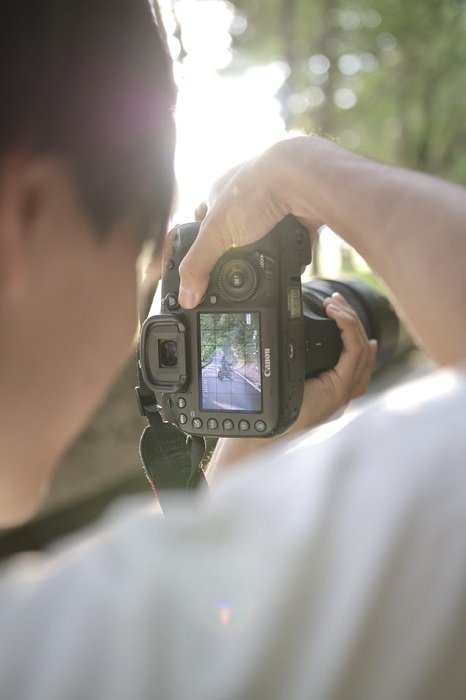
First, let’s look a bit more into what DSLRs are and how they differ from mirrorless cameras.
What is a DSLR Camera?
The initials stand for Digital Single Lens Reflex. That might make it sound complicated, but it’s pretty simple.
The digital part is fairly obvious. It refers to the fact that it is a digital camera rather than a film camera. You’re using a memory card instead of a roll of film.
Single-lens means that the camera only uses one lens to reflect light entering the camera onto the sensor. Older cameras would use several lenses and mirrors to reflect the light onto the film. This was less efficient, so single-lens cameras were a revelation at the time.
Reflex refers to the movement of the shutter and mirror. It only needs to make one mechanical movement to reflect the light onto the sensor. You change the speed of this motion by changing the shutter speed on the camera.
In the realm of modern digital cameras, you now have crop frame and full-frame DSLRs. This refers to the size of the sensor. Most crop frame DSLRs will use an APS-C sensor, which is smaller than the full-frame sensors.

DSLR vs Mirrorless
Mirrorless cameras are grabbing the headlines in the photography world. And it’s not without reason.
Many mirrorless cameras are smaller than their DSLRs counterparts. No space is needed for a mirror or prism, which allows for a smaller body. And, the lack of a mirror makes an electronic viewfinder possible as the light can travel straight to the sensor.
The lack of a mechanical shutter also means there is a reduction in noise. Some photographers like the sound of the shutter. But a silent camera can be an advantage for sports and wildlife photographers.
Burst mode speed is another area of competition. No mechanical parts mean that some mirrorless cameras have a much faster continuous shooting speed. This isn’t a general rule, but electronic shutters generally achieve a higher rate for continuous shooting.
But DSLRs have their benefits too. Many photographers still prefer the mechanical nature of DSLRs. Some find that the optical viewfinder helps with concentration and composition. Others like their ergonomic body designs.
It’s also easier to keep the sensor clean in a DSLR as the shutter protects it. If you need to change lenses with a mirrorless camera, there is a higher risk of dust reaching the sensor.
In terms of image quality, it’s a fairly even race. The camera having a shutter or not doesn’t affect the quality of the image. That tends to be determined by the sensor size.
Many manufacturers are now making new lenses specifically for mirrorless machines. But the quantity and variety don’t come close to that for DSLRs. There are hundreds of lenses available, especially for Nikon and Canon.
It appears that Sony and Fujifilm are now committed to the mirrorless camera market. But in our opinion, Nikon and Canon are still producing world-beating DSLRs in 2021.

Now, here are our picks for the best DSLR cameras available to buy in 2021. Check out our options for beginners, enthusiasts, and professionals.
Best DSLR Cameras for Beginners
1. Nikon D3500

- Type: Crop Sensor DSLR
- Sensor: APS-C
- Resolution: 24.2MP
- Screen: 3-inch fixed, 921,000 dots
- Viewfinder: Optical
- Lens Mount: Nikon F
- Max burst speed: NA
- Max video resolution: Full HD
- User Level: Beginner
If you’re new to photography, DSLRs are a great place to start. They are usable, have great features, and produce excellent images. The Nikon D3500 is the perfect example.
The D3500 is easy to use. The fantastic autofocus features make it easy to pick it up and start shooting straight away. And the 24.2MP sensor produces high-quality images that will feed you enthusiasm.
One beneficial feature is connecting the camera to your smartphone using the Nikon Smartbridge, which uses Bluetooth. It allows you to move photos from one to the other, freeing up space on the memory card as you go.
It is limited in some respects. It lacks a burst function, and there is no movable screen for multi-angle shots. But with the Nikon D3500, simplicity is part of the appeal. You can have fun taking pictures without getting lost in the function menu.
The Nikon D3500 is fun to use and affordable. It doesn’t have every function you can think of, but it’s the best DSLR camera for beginners.
2. Canon EOS 7D Mark II
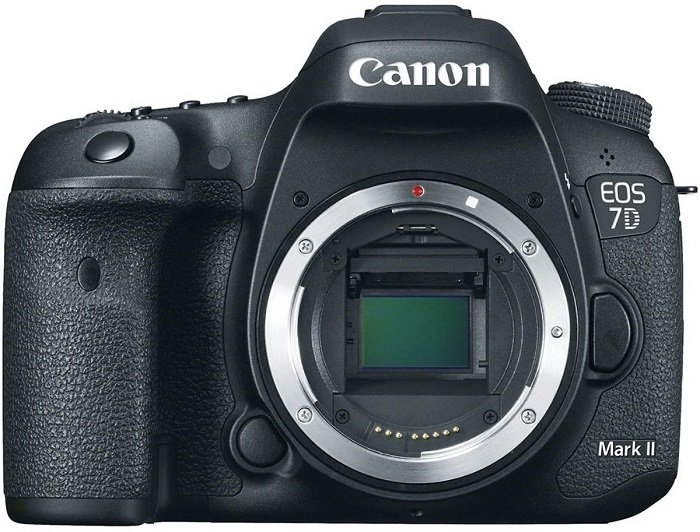
- Type: Crop Sensor DSLR
- Sensor: APS-C
- Resolution: 20.2MP
- Screen: 3-inch fixed, 921,000 dots
- Viewfinder: Optical
- Max burst speed: 10fps
- Max video resolution: Full HD
- User level: Beginner
The Canon EOS 7D Mark II is an excellent DSLR camera for beginners. It has fantastic build quality and all the functions you’d expect from an entry-level digital camera.
The 20MP sensor may not sound too powerful, but it still packs a punch. And, with the expanded ISO range, it works well in low-light conditions.
The Canon EOS 7D has a 65-point autofocus system. The camera will track your subject as it moves across your frame, making it great for action or sports photography.
There’s a continuous shooting speed of 10fps, which is quick by any standard. And the generous buffer performance allows for continuous shooting without losing any quality.
The extra functions do come with an extra cost. But, the Canon EOS 7D Mark II is a great DSLR camera for beginners.
3. Nikon D5600
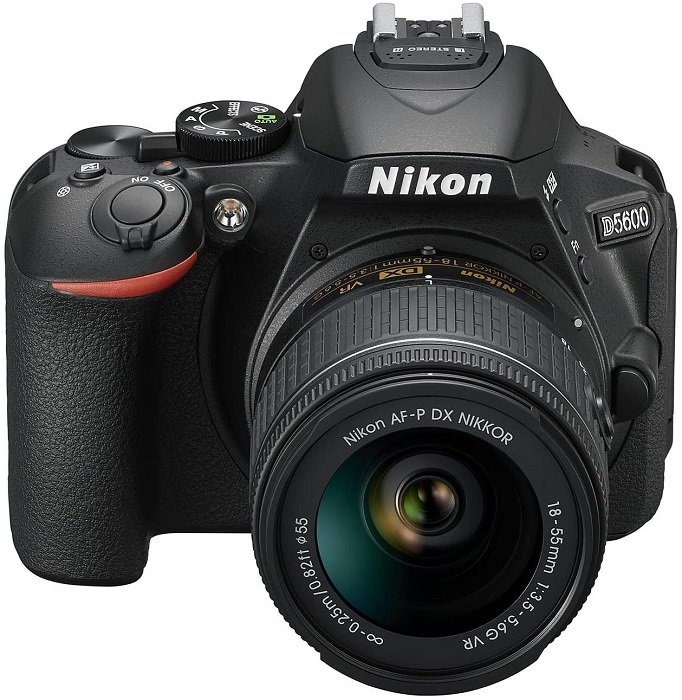
- Type: Crop Sensor DSLR
- Sensor: APS-C CMOS
- Resolution: 24.2MP
- Screen: 3.2-inch 1.037m-Dot Vari-Angle Touchscreen
- Viewfinder: Optical
- Max burst speed: 5fps
- Max video resolution: Full HD
- User level: Beginner/Enthusiast
Compared to the D3500, the Nikon D5600 has more features and functions. But with that expansion comes a bigger price tag.
The sensor resolution remains the same, at 24.2MP, so you’ll get excellent images with both cameras. But the D5600 has an expanded ISO range, from 100-25600. It’s versatile and can cope with different environments.
Sports and action photographers will enjoy the 39-point autofocus system. It’s quick and reliable, so you won’t miss your shot.
You can use the SnapBridge to move your images to other devices. Perfect for sharing your photos on social media. The vari-angle touch-screen is also a welcome upgrade.
With expanded functionality, the Nikon D5600 is on the edge of the beginners’ category. Enthusiasts would find this camera more than acceptable. But it’s a great DSLR camera for beginners too.
4. Canon EOS Rebel T100 / 4000D
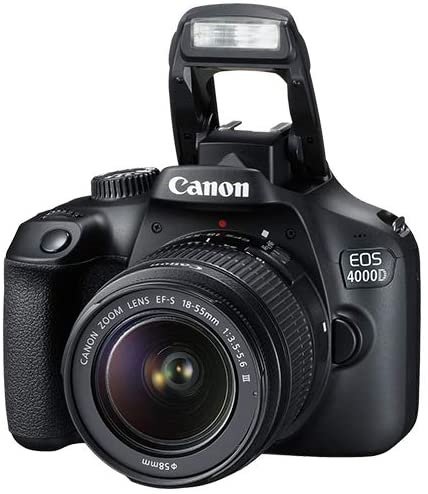
- Type: Crop Sensor DSLR
- Sensor: APS-C
- Resolution: 18MP
- Screen: 2.7-inch fixed, 230,000 dots
- Viewfinder: Optical
- Max burst speed: 3fps
- Max video resolution: Full HD
- User level: Beginner
With the EOS 4000D, Canon has taken a back-to-basics approach. It has been stripped back and simplified.
18MP is about as low a resolution you will find on a modern DSLR camera. But the image quality is still very good. It’s not professional but more than adequate for beginners.
The burst rate is sluggish at 3fps. But this will allow you to learn about burst functions and continuous shooting. And, the Canon EOS 4000D does have full HD video capabilities, something other entry-level cameras lack.
They’ve stripped it back to create a cheap DSLR option for beginners. But have Canon taken this too far? Not quite. The functionality is still good, and you can get some bundle packs at reasonable prices. The Canon EOS 4000D is still one of the best DSLR cameras for beginners.
Best DSLR Cameras for Enthusiasts
1. Canon EOS 90D
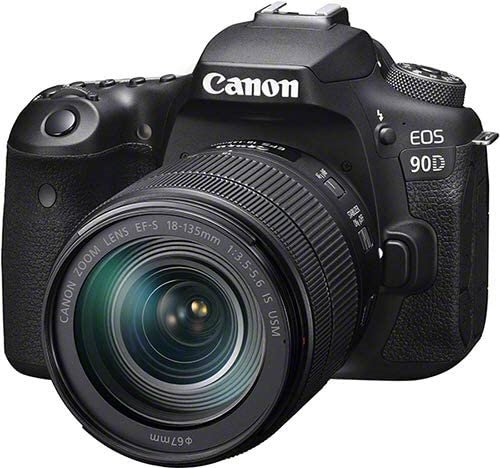
- Type: Crop Sensor DSLR
- Sensor: APS-C
- Resolution: 32.5MP
- Screen: 3-inch vari-angle touchscreen, 1,040,000 dots
- Viewfinder: Pentaprism
- Max burst speed: 10fps
- Max video resolution: 4K
- User level: Enthusiast
When it comes to mid-range DSLR cameras, Canon has stolen the show. The Canon EOS 90D is the best DSLR camera for enthusiasts in 2021.
The sensor has a resolution of 32.5MP. Impressive for an APS-C sensor. The images from this camera will knock your socks off, and you won’t lose quality when shooting at 10fps. Its only weakness is the limited ISO range.
The Canon EOS 90D is not only photographers that love this camera. Thanks to the 4K uncropped video capabilities, videographers and vloggers are raving about it too.
For quality and functions, you can’t do better than the Canon EOS 90D. And the price isn’t bad either. It is the best DSLR camera for enthusiasts.
2. Nikon D7500
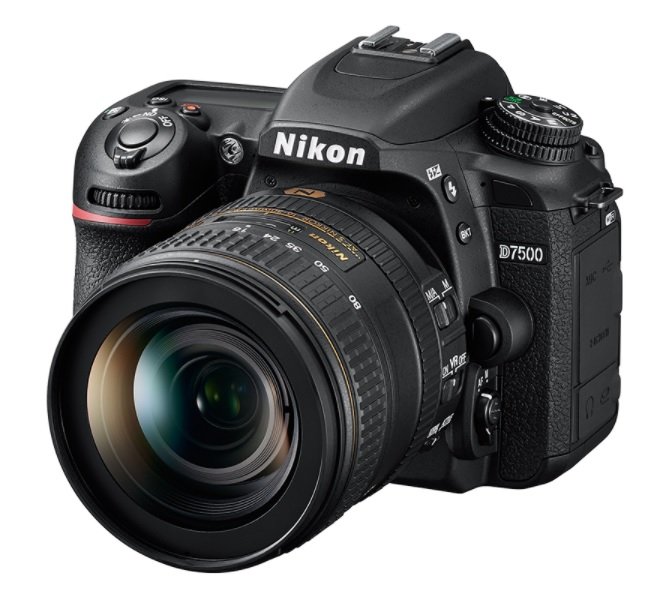
- Type: Crop Frame DSLR
- Sensor: APS-C
- Resolution: 20.9MP
- Screen: 3.2-inch tilting touchscreen, 922,000 dots
- Viewfinder: Pentaprism
- Max burst speed: 8fps
- Max video resolution: 4K
- User level: Enthusiast
The Nikon D7500 is a versatile and reliable camera. It’s one of the best DSLR cameras for intermediate-level photographers.
This camera is a great all-rounder. The resolution of 20.9MP might seems low for this level, but the image quality is superb. And with an ISO range of 100-51200, extendable up to ISO 1640000, the D7500 performs brilliantly in dark conditions.
The 51-point autofocus and 8fps burst mode make it great for capturing the action. And, if that’s not quick enough, you can try the 4K video capture.
The image resolution doesn’t quite match the Canon EOS 90D. But in every other respect, it’s a close race between the two. The Nikon D7500 is one of the best DSLR cameras for enthusiasts.
3. Canon EOS 6D Mark II
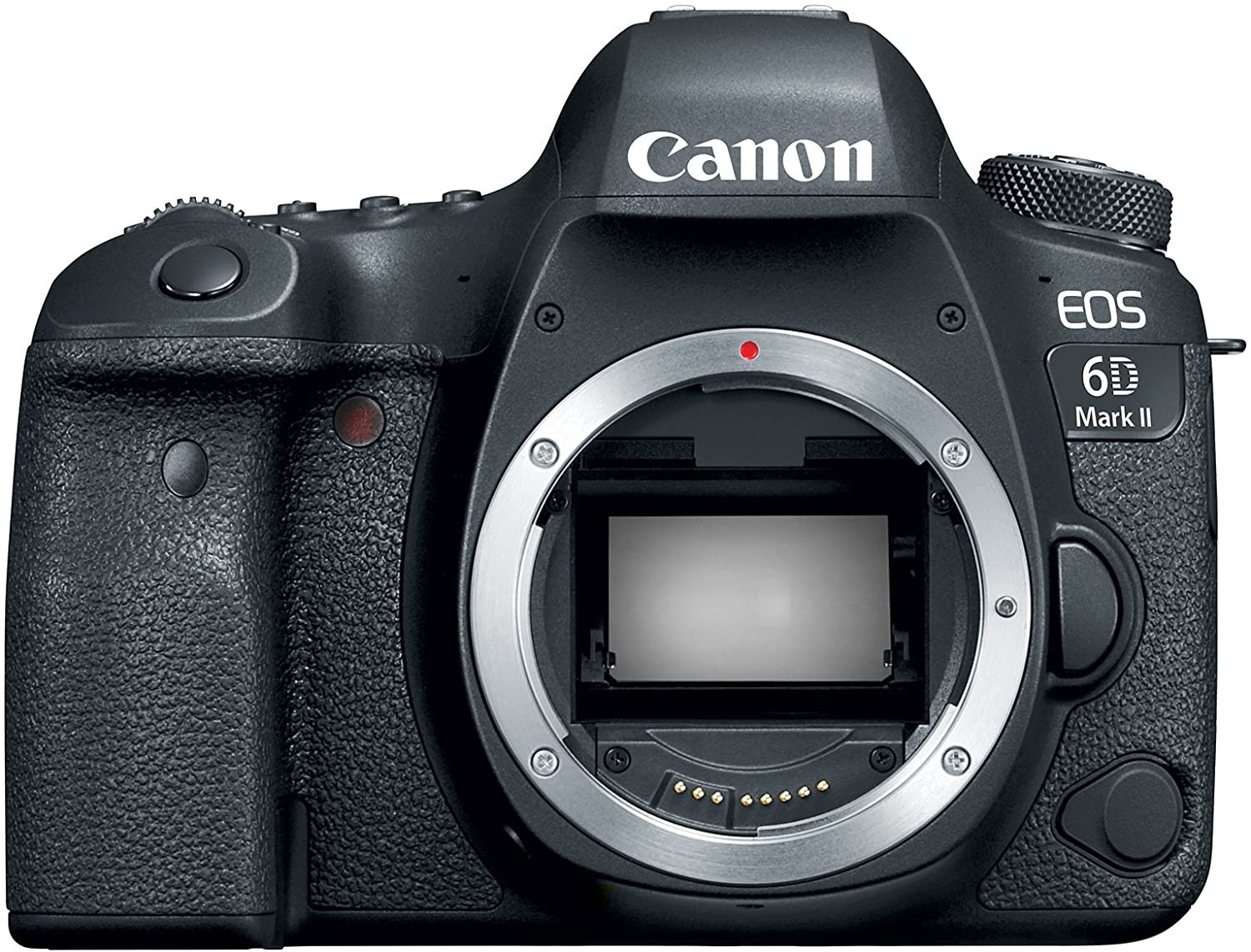
- Type: Full-Frame DSLR
- Sensor: Full-frame CMOS
- Resolution: 26.2MP
- Screen: 3-inch vari-angle touchscreen, 1,040,000 dots
- Viewfinder: Optical
- Max burst speed: 6.5fps
- Max video resolution: Full HD
- User level: Enthusiast
The Canon EOS 6D Mark II is for serious enthusiasts. It’s for the photographers that want to capture the best images they can. It isn’t the most versatile, but it plays to its strengths.
It’s hard to beat the Canon EOS 6D Mark II on image quality. The 26.2MP sensor packs a wallop, and the expandable ISO range means it won’t let you down if the conditions change.
The burst of 6.5fps is slow compared to some competitors. But the 45-point autofocus system is quick and reliable.
It’s a rugged camera with impressive build quality. If you want a DSLR that gives you quality images, the Canon EOS 6D Mark II won’t let you down. One of the very best DSLR cameras available.
4. Nikon D500
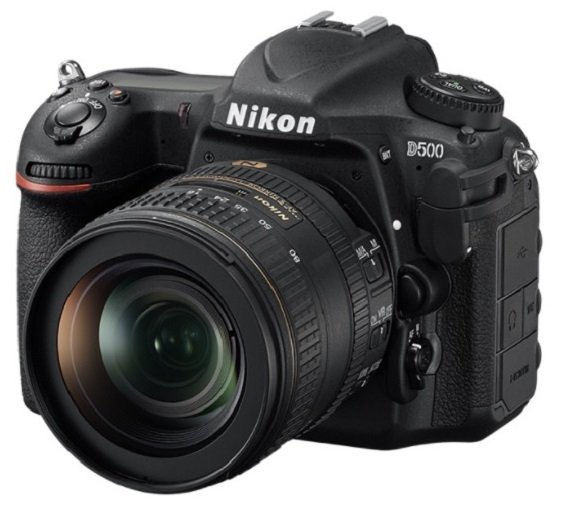
- Type: Crop Sensor DSLR
- Sensor: DX-Formant CMOS
- Resolution: 20.9MP
- Screen: 3.2-inch tilting LCD touchscreen, 2,359,000 dots
- Viewfinder: Pentaprism
- Max burst speed: 10fps
- Max video resolution: 4K
- User level: Enthusiast
The Nikon D500 is geared towards sports and wildlife photography. But the excellent functions and performance make this a great DSLR camera for any enthusiast.
Other cameras on this list have surpassed the 20.9MP sensor. But, it has a rapid 10fps burst mode. And, the buffer system can capture up to 200 RAW when shooting at full speed.
The 153-point autofocus system has wide coverage over the frame, so you won’t lose your subject. It’s perfect for shooting fast action or at night. The Nikon D500 also has excellent 4K video capabilities.
The Nikon D500 might not be for everyone. But if you’re interested in sport or wildlife photography, the D500 is one of the best DSLR cameras on the market today.
Best DSLR Cameras for Professionals
1. Nikon D850

- Type: Full-Frame DSLR
- Sensor: FX-Format Full-Frame CMOS
- Resolution: 45.7MP
- Screen: 3.2-inch tilting touchscreen, 2,600,000 dots
- Viewfinder: Optical
- Max burst speed: 9fps
- Max video resolution: 4K
- User level: Professional
The Nikon D850 is a robust and versatile full-frame camera. It was made to work and won’t let you down.
The full-frame sensor has a resolution of 45.7MP, which is pretty mind-blowing. For image quality, you won’t find anything better in the world of DSLRs. The 4K video capture is also excellent quality, making it an ideal camera for videographers too.
The continuous shooting speed is quick, and the autofocus system will function even at full speed. And the battery life is great too. You can get up to 1840 shots on one charge, which is impressive for a camera of this standard.
A stand-out feature is the focus shooting mode. This mode allows you to change the focal area after taking the picture and also makes image stacking possible in post-production.
The intervalometer also provides a lot of creative scope for time-lapse photography. You can program specific intervals and shooting rates for different effects.
The Nikon D850 isn’t cheap. But you are paying for quality in every respect with this camera. It is the best DSLR camera for professionals in 2021.
2. Canon EOS 5D Mark IV
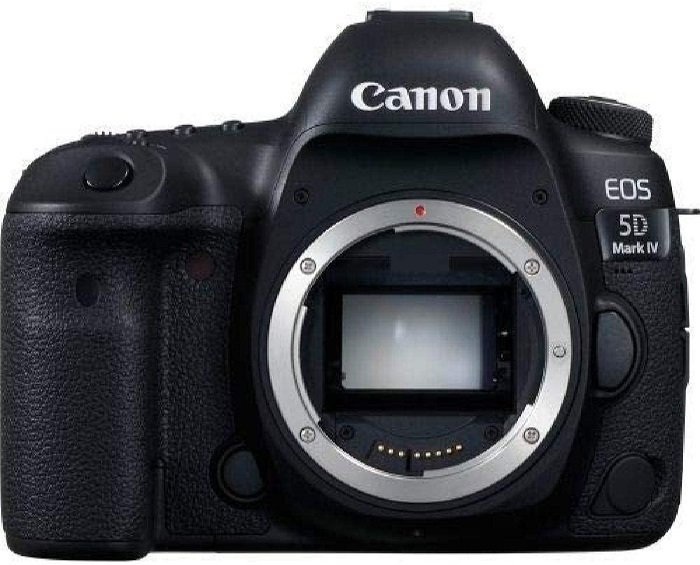
- Type: Full-Frame DSLR
- Sensor: Full-Frame CMOS
- Resolution: 30.4MP
- Screen: 3.2-inch touchscreen, 1,620,000 dots
- Viewfinder: Pentaprism
- Max burst speed: 7fps
- Max video resolution: 4K
- User level: Professional
The Canon EOS 5D Mark IV is a tough and reliable DSLR camera. It’s well-rounded and is very popular among professional photographers.
The specs may not match those of the Nikon D850. But the race is closer than you might think. The 30.4MP CMOS sensor produces stunning images that are of professional quality.
The continuous shooting speed is a reasonable 7fps. But the autofocus system is fast and reliable with stills and video. And despite the cropped footage, the Canon EOS 5D Mark IV is ranked highly by video makers.
The Dual Pixel Raw innovation allows you to shift the focus after you’ve taken the picture. You can correct errors or change the subject. It’s a fantastic feature for professionals when money is on the line.
The Canon EOS 5D Mark IV is robust and reliable. It’s a professional DSLR camera that produces excellent results with photos and videos. It is one of the best DSLR cameras for professionals on the market.
3. Nikon D810
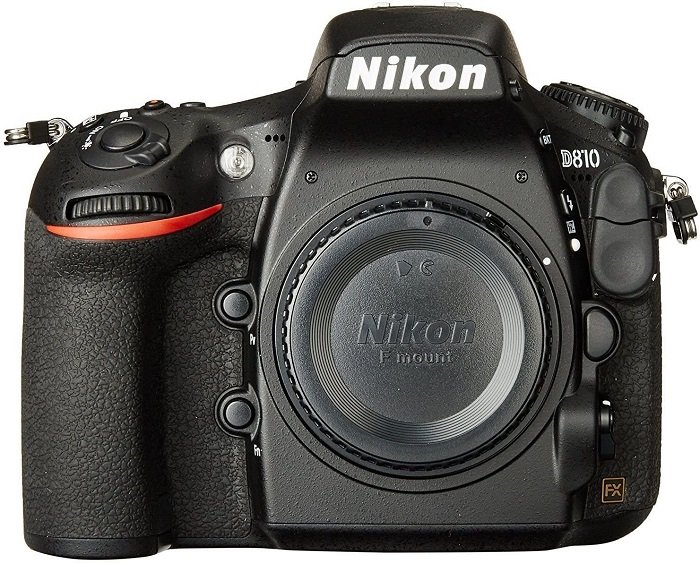
- Type: Full-Frame DSLR
- Sensor: FX-Format Full-Frame CMOS
- Resolution: 36.3MP
- Screen: 3.2-inch tilting touchscreen, 1,228,800 dots
- Viewfinder: Pentaprism
- Max burst speed: 7fps
- Max video resolution: 4K
- User level: Professional
The Nikon D810 is an earlier incarnation of the D850. But, despite its age, the D810 is still has everything a professional needs from a DSLR.
Some specs may not match up to the D850. But for many, the 45MP sensor on the D850 is overkill. A resolution of 36.3MP on the D810 is more than enough to capture stunning images. It will more than meet the standard of any publication or editorial.
The autofocus system is sharp and reliable, and the burst is decent for continuous shooting. The 4K video is cropped but still of excellent quality. And, it has a brilliant ISO change for shooting in low-light conditions.
The D850 is at the top of the professional league. But the Nikon D810 is still a great option for professional photographers in 2021. It may not have the very top specs, but you’ll find very little to complain about. It’s still one of the best DSLR cameras available.
4. Pentax K1 Mark II
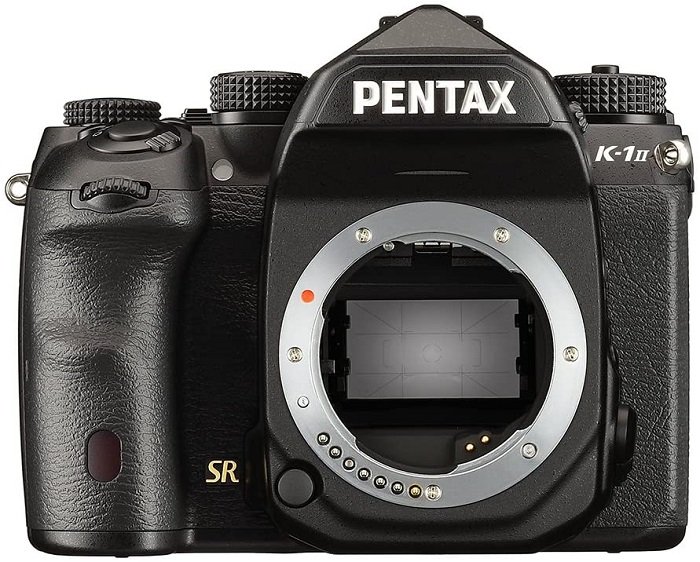
- Type: DSLR
- Sensor: Full-frame
- Resolution: 36.4MP
- Screen: 3.2-inch pivoting screen, 1,037,000 dots
- Viewfinder: Optical
- Max Burst Speed: 4.4fps (6.4fps in APS-C crop mode)
- Max Video Resolution: 1080p
- User Level: Enthusiast/professional
Canon and Nikon are dominating the DSLR market. But the Pentax K1 Mark II can definitely compete with the DSLR top dogs. It’s a superb full-frame camera.
The 36.4MP image resolution meets the brief of a professional camera. It won’t disappoint on image quality. And the built-in 5-axis image stabilization system will ensure a sharp focus on all your images.
The autofocus system doesn’t live up to its competitors. But, the Pentax gives you more options with the burst function. You have 4fps with the full-frame sensor, or 6fps if you use crop mode. But one downside is the lack of 4K video capture, which isn’t ideal for videographers.
The Pentax K1 Mark II is a DSLR for traditionalists. It loses points on features, but it is tough and reliable. It’s weather-sealed and made for tough work. If you want a back-to-basics camera that you can rely on, the Pentax is one of the best DSLR cameras for professionals.
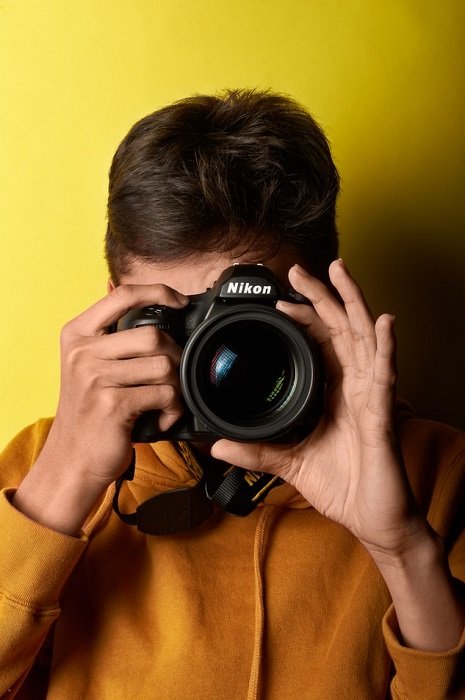
DSLR cameras may not be in vogue right now, but don’t let that put you off. The battle between DSLR and mirrorless cameras is not over. And Nikon, Canon, and Pentax are proving DSLRs still have a place in the world of photography.
The best DSLR cameras offer everything you’ll need, from stripped-back to feature-packed. There are top-market cameras and affordable alternatives.
---------------------------------------------------------------------------------------------
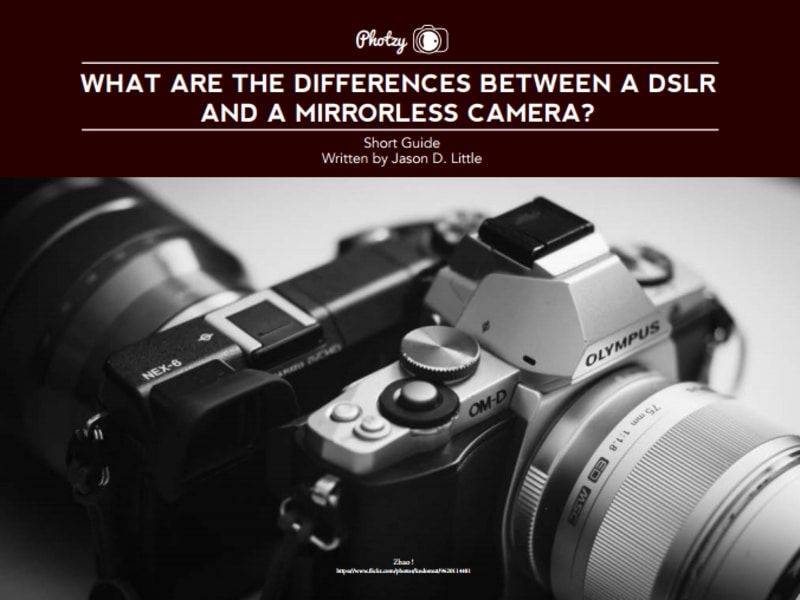
No comments:
Post a Comment
Note: Only a member of this blog may post a comment.